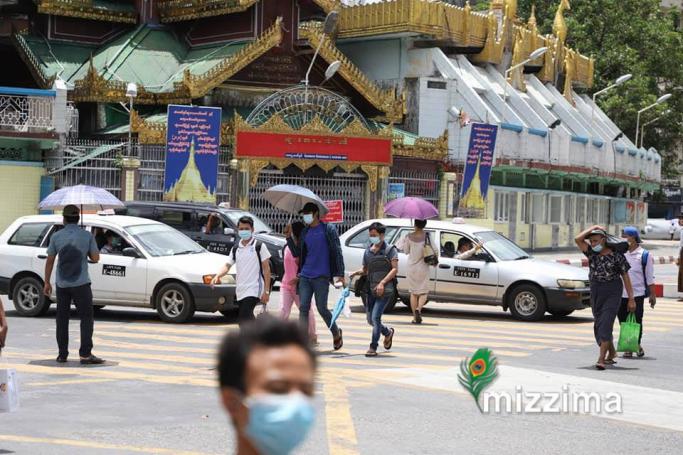The latest edition of the half yearly Myanmar Economic Monitor- June 2020 of the World Bank has devoted its analysis to the economic impact of COVID-19 and how to recover from the disruptions caused by the pandemic and associated measures for the prevention of its spread.
“The pandemic and associated containment measures are undermining aggregate demand, disrupting value chains, and reducing the labor supply, following strong activity in the first 5 months of the year”. The crisis has had an especially negative effect on wholesale and retail trade, tourism-related services, manufacturing and construction. Sectors like agriculture and telecommunications appear to have demonstrated resilience compared to others.
The pandemic has impacted the firms of all sectors (agriculture, industry and services) severely as per the survey conducted in May 2020 by the World Bank. About 16 percent of the firms it has surveyed reported closing their operations for an average of eight weeks due to the Covid-19 pandemic, but this figure rose to 39 percent among service sector firms. By contrast, just 12 percent of manufacturers and 6 percent of agricultural firms reported temporary closures. 89 percent of manufacturers reported a reduction in sales, compared to 75 percent of agricultural firms. Adaptation of firms to changing scenario in terms of production, sale and marketing strategies appear to be slow. And very few firms have applied to seek support from the government announced package of relief measures. This reflects the need for adopting an outreach strategy to support the firms in a more systematic way.
When it comes to household level impact, MEM finds that poverty rates are going to go up in the short run due to the job and welfare losses of people in the informal sector, but is expected to recover in the coming financial year. “The slowing economic growth threatens to partially reverse Myanmar’s recent progress in poverty reduction while reducing the incomes of households that are already poor”.
Specifically pointing out the impact on urban low income households, MEM reports “Urban residents are highly exposed to both the health risks and economic effects of Covid-19. Mobility restrictions and lockdown measures have had an especially acute impact on the livelihoods of workers from urban households who are especially likely to be employed in retail and travel-related activities”.
Due to the pandemic, Myanmar’s GDP growth forecast for FY2019/20 has been revised downward from 6.4 percent to just 0.5 percent as all the sectors are hit, with adverse effects of varying intensity projected across all sectors. Quick recovery is expected in the FY 2020/21 in an optimistic scenario, but the downside risks are identified as severe given the unpredictability associated with the recovery both for Myanmar as well as the rest of the economies. It would mean that the recovery would take longer time in case the pandemic persists till later part of the year. Widening fiscal deficit due to anticipated low tax and non tax revenues would also strain the fiscal position of the government in terms of providing any additional support to the economy apart from what has been proposed in the CERP.
Appreciating the CERP, the WB observes that ‘the effectiveness of the plan could be increased by ensuring flexibility to spend what is committed, extending support to smaller enterprises and ensuring that all households in Myanmar can benefit from the transfers”.
This would mean proactively working with private sector and reaching to them and also ensuring the social assistance programmes reach the targeted beneficiaries without delay and leakages in the system. “As COVID-19-related shocks dissipate, a combination of infrastructure investment, increased activity in the service sector, stronger exports, and resurgent private consumption is projected to return the GDP growth rate to its pre-crisis trend”. This would mean that the Myanmar government has to ensure expenditure efficiency targets to be met with renewed vigor, recouping the time lost due to the pandemic lockdown and disruptions.












